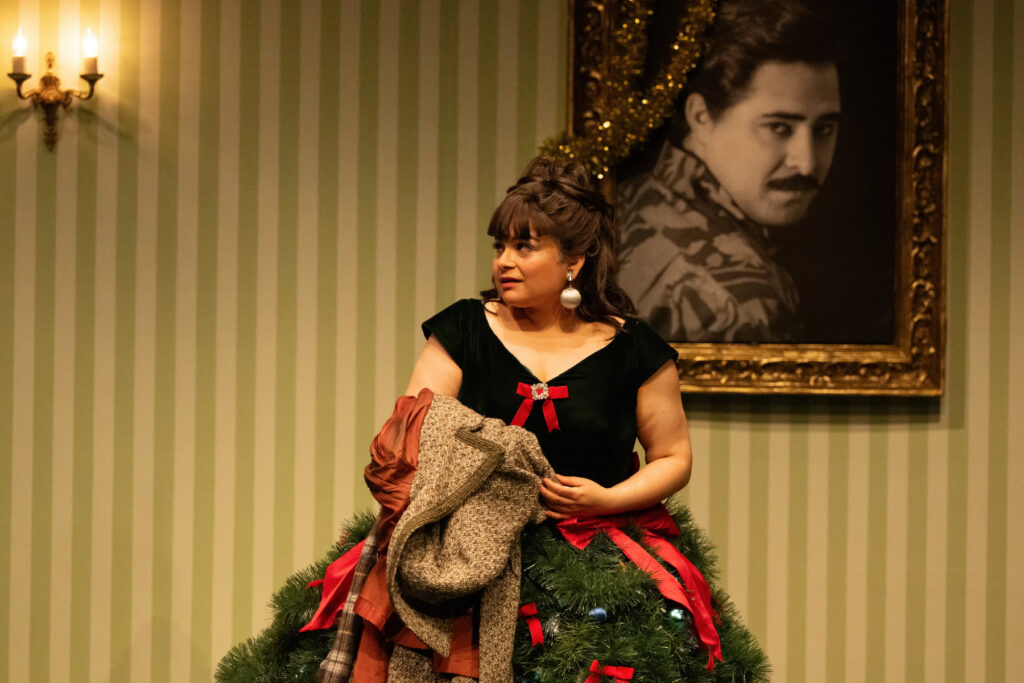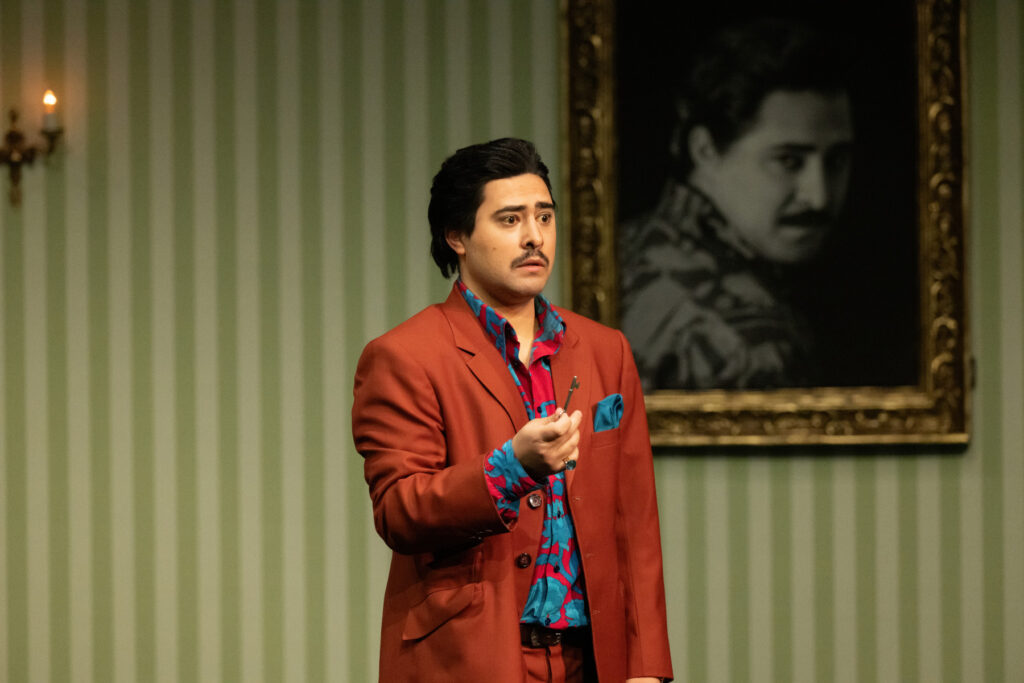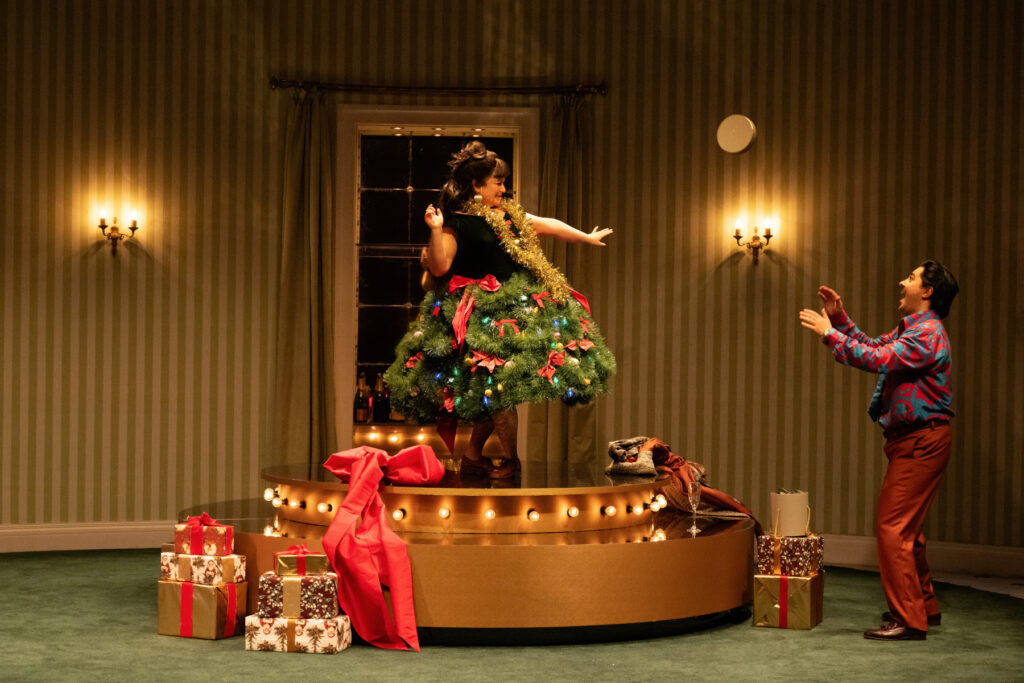Telemann’s Pimpinone (1725) is perhaps second only to Pergolesi’s La serva padrona (whose plot it pre-empts) as one of the best-known examples of that curiosity of 18th century musical theatre, the intermezzo. As this description indicates, it was a work which was designed to be performed – really as two or three episodes, not continuously – between the parts of another opera. Almost always they were domestic comedies, an opera buffa in miniature before that genre took off in more developed from, and typically concerning an unlikely love affair. Usually, it was mounted to serve as contrasting, light relief between the acts of serious opera – in the case of Pimpinone, for Telemann’s adaptation at Hamburg of his friend Handel’s recent Tamerlano (Pergolesi’s work was written for his own Il prigionier superbo in 1733). It’s somewhat artificial, therefore, to present such a slight – if charming and witty – piece as a single, thoroughgoing opera on its own terms.

Sophie Gilpin’s overtly feminist interpretation of Vespetta’s rags-to-riches story in the context of the 1960s essentially works, as it charts her wily progress from a jobless maid seeking employment (and, implicitly, a good match ion marriage), charming Pimpinone to employ her and fall in love, and on to their bickering in jaded matrimony. It strains to draw out in a more obvious, portentous manner the social and economic relations between the two characters already subtly and humorously explored in the original drama. During the course of the 18th century such comedies developed with the growing cultural influence of the bourgeoisie, as against aristocratic, patriarchal authority, which opera seria generally served to promote as a positive, benign force. Hence, those comic scenarios often feature women using their wits successfully to overcome overbearing male waywardness. The contrast between the satirical purposes of an intermezzo and the didactic ones of an opera seria was therefore telling, as also the eventual supplanting of the latter by the former.

But Gilpin’s production deepens, with logic and a sense of a pathos, Vespetta’s fight for personal and social freedom as a woman, by setting each of the work’s three acts against a party in which she is denied full or any involvement – Pimpione’s Christmas party at the start; a gambling party in the second; and the birthday celebration of her and Pimpinone’s son in the third. There is also a comically sad irony in the first as she presents herself gaudily dressed up as a Christmas tree, as though no more than another festive ornament in Pimpinone’s household. His self-absorption is revealed by the portrait of himself that hangs in front of the wall safe, symbolically masking his inward preoccupation with material wealth; and by his present to her of a dress in the same psychedelic pink and blue pattern as his own shirt, to subsume her individuality into his. The three movements of a Sinfonia by Telemann (actually denoted a Sonata or Quintet in the official catalogue of the composer’s works, and jettisoning the trumpet of its scoring) are pressed into service as interludes between the opera’s parts, and their elegant performance here mark, with a certain melancholic irony, the passage of time.

Isabela Díaz and Grisha Martirosyan give proficient performances which come to a head in the sparring numbers of the third part, with Pimpinone’s wickedly funny aria, which satirises (in falsetto) Vespetta and an imagined neighbour’s gossiping about him, and their vicious duet (the work’s most famous section) in which they tear shreds off each other, which is made all the more effective by the increased tempo for its da capo, rising to a Vivaldian frenzy of rage. Before the third part a slight tendency to plod by the performers underlines the earnestness of this production’s purpose rather than sparkling with more of the buffo temperament and social satire that Telemann and his librettist surely intended in this genre. The baroque ensemble (billed as the ‘Orchestra of the ENO’ – presumably members of the English National Opera) under Peggy Wu’s direction provide nuanced accompaniment, attentive to the distinctive rhythms of Telemann’s music, again underscoring the contrast between the courtly origins of the dance forms utilised and Vespetta’s social rise.
Curtis Rogers
Pimpinone (interspersed with Sinfonia [sic] in D major), TWV44:1
Composer: Georg Philipp Telemann
Libretto: Johann Philipp Praetorius
Cast and production staff
Pimpinone – Grisha Martirosyan; Vespetta – Isabela Díaz
Director – Sophie Gilpin; Designer – Anna Yates; Movement Director – Natasha Harrison; Lighting Designer – Ryan Day; Conductor – Peggy Wu; Orchestra of ENO
Linbury Studio, Royal Opera House, Covent Garden, London, 2 May 2025
Top image: Grisha Martirosyan (Pimpinone) and Isabela Díaz (Vespetta)
Photos © Camilla Greenwell